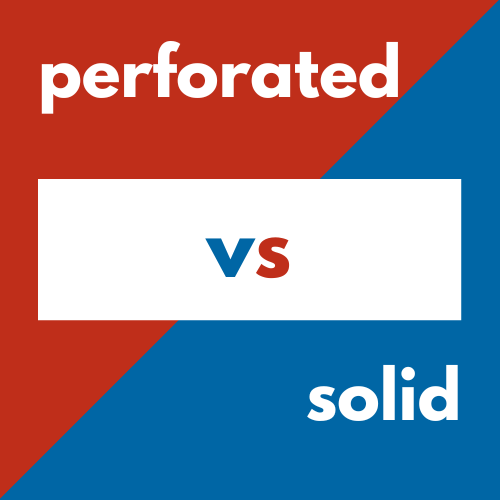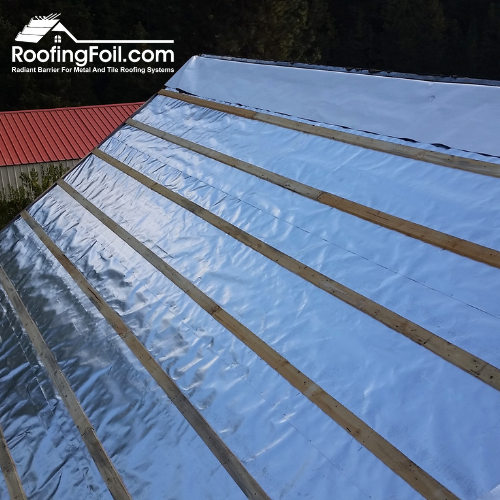When to use Solid vs Perforated Foil
There is some debate in the radiant barrier business whether to use a perforated or a solid radiant barrier product in an attic application. Let set the record straight: in an attic application, you should use a perforated foil product.
Use Perforated Foil in an Attic Space
This means that products with bubble foil, foam, etc. should not be used in a residential attic.
Why? Because those products are not perforated or breathable. That’s important because your attic space needs to breathe.
Why? Because you want dry walls and ceilings and the perforations allow for moisture to flow freely and escape/dry out. Over 70% (that’s 7 out of 10) of home issues are due to mold, mildew, rot, decay, etc. and moisture is the common theme.
In an attic that is vented you ALWAYS want to use a perforated product.
Dry products don’t grow mold, rot or decay; this is why in an attic you would choose a perforated product (that allows moisture vapor to pass through freely) over a solid product (that traps moisture behind it), to keep things dry.

In any application that has the potential for moisture accrual (like a vented attic space), you want to use a perforated product, NOT a solid/vapor barrier.
When Would I Use Solid Foil?
We also make a SOLID (non-perforated) VAPOR BARRIER version of our standard perforated radiant barrier foil.
There are a few, specific instances and applications where a solid foil makes sense. The most popular use is as a radiant barrier underlayment in metal or tile roofing. In this case, the solid AtticFoil™ can go over an underlayment, below a metal or tile roof that has an air space. You can also use our RoofingFoil™ + Underlayment All-in-One direct to the deck or over another roofing underlayment (recommended for tile roofing).
Another common use of the solid foil is under a home, in a crawlspace. Crawlspaces are notoriously damp and contain high levels of moisture. Many people use plastic sheeting in a crawlspace to help stop the transfer of the ground moisture up into the subfloor of the home. Using our solid foil below the floor joists in a crawlspace would do two things: block radiant heat loss from the floor above and stop moisture coming up from the ground.

What is the Perm Rating of Your Foil Products?
A perm rating is simply a way to measure the diffusion of water vapor (moisture) through a material. The higher the perm rating, the more vapor/moisture can escape. The lower the perm rating the less amount of vapor/moisture can escape.
In a vented attic you want a perforated product – one that allows moisture to pass through freely and easily, so that it can evaporate and dry out. Even at a perm rating of 14, The Original AtticFoil™ has perforations that are still small enough that in some cases it’s practically an air barrier. This just means the perforations (pin holes) are small enough that they don’t decrease the foil’s effectiveness, but large enough to allow moisture to easily pass through and dry out.
For the ultimate permeability, we designed our SuperPerf™ with bigger holes so moisture blocking is virtually never an issue. If you live in a cold/northern climate and are planning on installing your radiant barrier over the insulation, you could end up trapping moisture under the radiant barrier foil if you do not have a perforated product. To prevent this, follow our installation instructions and use the SuperPerf AtticFoil™ product.
When you are dealing with a low perm rating, your main concern is trapping moisture; any material with a perm rating of 1.0 or less is considered a vapor retarder (meaning it doesn’t allow vapor to pass though). Our solid foil is rated at less than 1 perms, so it’s impermeable (just like plastic sheeting is).



